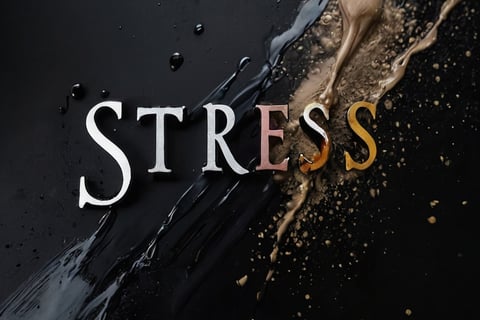How can creative outlets reduce stress for students?
Feeling overwhelmed by academic stress? What if creative activities like art, music, and writing could be your secret weapon to not just cope, but thrive in your studies? Discover how these outlets can boost emotional resilience, reduce anxiety, and transform your student experience—could creativity be the missing link to managing stress?
11/11/20249 min read
In today’s fast-paced academic world, students often experience high levels of stress due to demanding coursework, extracurricular responsibilities, and future career pressures. Stress can take a toll on students' mental health, leading to burnout, anxiety, and even depression.
While traditional coping mechanisms like exercise and mindfulness have proven beneficial, creative outlets are emerging as powerful tools for managing stress. How can creative outlets reduce stress for students? Content dealing with coping with academic pressure and stress management tips for students, building resilience and managing stress in a competitive world and handling stress in high-pressure academic environments highlights the significance of coping strategies that also align with creative outlets as effective stress relievers.
Engaging in creative activities such as writing, painting, playing music, or dancing provides students with a healthy escape from their academic responsibilities, allowing them to recharge and return to their work with improved focus and reduced anxiety.
Additionally, our articles on the best mindfulness techniques for stress relief in students and developing healthy coping mechanisms in students further underscore the importance of fostering healthy habits. Creative practices, such as art therapy or music improvisation, offer students mindful experiences that allow them to express their emotions constructively, which is vital for stress reduction.
Creative activities not only offer opportunities for self-expression and emotional release but also facilitate social connection and relaxation, contributing to a more balanced academic experience. Whether it's sharing artwork in a group, playing music with others, or participating in collaborative creative projects, these outlets create bonds between students, reducing feelings of isolation. By incorporating creativity into stress management strategies, students can enhance their resilience, improve emotional well-being, and cope with the pressures of academic life in a more holistic way.
The balance between intellectual demands and emotional health is crucial for thriving in high-stress academic environments, and creative outlets provide an invaluable tool for achieving this balance.
How Can Creative Outlets Reduce Stress for Students?
Creative outlets reduce stress for students in such a way that engaging in creative arts like drawing, painting, and music-making provides a therapeutic effect that helps students manage stress. Creative arts interventions can be highly effective at reducing psychological symptoms associated with stress and anxiety.
These interventions allow students to step away from their usual routines, enter a state of "flow," and focus on activities that calm the mind. For students dealing with constant deadlines and academic pressures, creative activities offer an escape—a chance to clear their minds, rejuvenate, and return to their work with a fresh perspective.
The Psychological Impact of Flow and Mindfulness
When students engage in creative outlets, they often enter a “flow state,” characterized by intense focus, loss of self-consciousness, and a deep immersion in the activity. Flow, a concept developed by psychologists is known for its positive effects on mental well-being, including reduced anxiety and increased happiness.
During these moments, students lose track of time and become fully engaged in the creative process.
Studies show that being in a flow state also releases endorphins, which contribute to feelings of relaxation and pleasure, reducing the physical manifestations of stress such as muscle tension and elevated heart rate. Creative tasks provide a structured yet relaxing outlet, balancing mindfulness with self-expression, and allow students to experience relief from ongoing stressors.
Creative Outlets as Emotional Expression and Release
Frequently, students find themselves in the situation in which problems overwhelm them.
Due to the high-pressure academic environment students may often become introverted and paralyzed by the challenges they need to face.
For that reason, it is advisable that students find an activity that is not in any way related to their studies.
Namely, by concentrationg on the problems and the issues arising out the requirements for good academic performance, students may suffer in a way that their ability to cope with this requirements sinks significantly.
It may also come to the point in which they are unable to use their creativity to overcome the challengesm which may leave them in a ditch of despair.
That is where creative outlets help. By engaging into such activities you draw the attention of the mind to tasks which help you even in your studies. Keeping your mind amused with such topics may even regenerate the mind's ability to take a more unique approach to the academic issues you are facing.
How Non-Verbal Expression Helps Release Emotional Tension
Creative outlets reduce stress for students by providing a way to express emotions non-verbally. For students, expressing feelings of anxiety, frustration, or sadness can be difficult, especially when it comes to verbalizing them in traditional therapeutic or social settings.
Creative activities like painting, drawing, and dance provide an emotional outlet that bypasses the need for words.
A reasearch found that art-based interventions, including activities like clay modeling and expressive drawing, significantly reduce stress by allowing students to release emotions that might otherwise remain suppressed.
Art as a Form of Personal Healing
Art therapy, a form of treatment that uses creative processes to help individuals heal and process emotions, has gained recognition for its effectiveness in managing stress.
By participating in artistic activities, students can process complex emotions without having to articulate them directly. Whether it’s painting a landscape or creating an abstract piece, the act of creation allows students to take control of their inner struggles and find peace in the process. Scientists suggest that engaging in art therapy practices promotes mental clarity and resilience, especially when it is combined with mindfulness, which fosters a more present-focused mindset.
This combination helps students better cope with current stressors and prepares them to handle future challenges.
Building Resilience and Coping Skills Through Creative Outlets
Building resilience and coping skills through creative outlets is a powerful way for students to navigate stress and academic challenges. Creative activities like painting, journaling, music, and dance provide an avenue for emotional expression, allowing students to process their feelings in a healthy way.
These outlets not only offer a break from the pressures of coursework and exams but also help in building emotional resilience by fostering self-awareness and emotional regulation.
Studies show that engaging in creative practices can lower stress hormones and enhance mood, which strengthens coping mechanisms during stressful times. By integrating creativity into their routines, students can develop a stronger sense of self, improve problem-solving skills, and boost their mental well-being, all essential for thriving in a demanding academic environment.
Could creativity be the key to building resilience and better handling the ups and downs of student life?
The Role of Creativity in Developing Resilience
Creative outlets foster resilience by encouraging students to explore, problem-solve, and adapt, qualities that are crucial in dealing with stress. Creative tasks require flexibility and a willingness to take risks, helping students to cultivate a mindset that is better equipped to face setbacks.
This experience of working through creative challenges builds emotional resilience. One research showed that students who engage in creative practices develop stronger problem-solving skills and are less likely to feel overwhelmed by challenges.
This resiliency can translate to academic settings, where students face pressures to excel in exams, projects, and other high-stakes activities.


Creative Outlets as a Practice of Emotional Regulation
Engaging in creative outlets helps students learn to regulate their emotions, which can improve their overall response to stress. Through creative processes, students practice skills such as self-reflection, patience, and acceptance, which are essential in managing stress.
For example, when painting or creating music, students must engage in a continuous process of refining and adjusting, teaching them to handle situations that do not go as planned.
This skill-building is crucial, as it enables students to manage the uncertainty and pressures they face in academic environments. By practicing creativity, students build an inner resilience that allows them to approach stress with a calmer, more balanced mindset.
The Social Benefits of Creative Outlets for Stress Reduction
Creative outlets for stress reduction offer significant social benefits that can enhance both emotional well-being and interpersonal connections. Activities like group art projects, music ensembles, and collaborative writing or drama provide students with the opportunity to connect with others in a meaningful way, reducing feelings of isolation.
Engaging in creative practices together fosters teamwork, communication, and shared experiences, which can create strong social support networks essential for stress management. According to research, social engagement through creativity can lead to a reduction in anxiety and depression, as it enhances feelings of belonging and self-worth.
These social interactions not only provide a creative release but also offer students a sense of community and understanding, making it easier to cope with academic pressures.




Building Connections Through Group-Based Creative Activities
Participating in creative activities within a group setting, such as a music workshop or art class, can be highly beneficial for students’ mental health. Being part of a creative community helps students establish social connections and gain a sense of belonging.
Collaborative creative practices enhance the stress-relief benefits of creativity, as students share their projects and receive supportive feedback. This sense of community alleviates feelings of loneliness, which are common sources of stress, especially for students living away from home for the first time.
Group creative activities provide students with a network of friends and mentors who can offer emotional support and encouragement.
Sharing and Performing: Building Confidence and Reducing Anxiety
Engaging in performance-based creative outlets, like theater, dance, or music, allows students to confront and reduce anxiety by sharing their talents with others.
While performing may initially feel intimidating, repeated exposure builds confidence and can help students overcome fears related to public speaking or social interaction.
By taking risks in a supportive environment, students grow more comfortable with vulnerability, which reduces anxiety in academic and social contexts.
Furthermore, performing in front of others releases endorphins and increases feelings of connection and support, providing students with long-lasting mental health benefits.
Long-Term Benefits of Creative Outlets for Student Well-Being
Creative outlets not only provide immediate relief from stress, but they also offer long-term benefits for student well-being. Engaging in activities like painting, music, and writing over time helps students build coping strategies that contribute to emotional resilience.
Research shows that long-term involvement in creative practices can reduce the risk of mental health issues such as anxiety and depression. These activities encourage self-expression, which leads to increased self-esteem and a more positive self-concept.
Additionally, they promote neuroplasticity, enhancing cognitive flexibility and problem-solving skills, which are crucial for navigating academic and life challenges. As students consistently engage in creative outlets, they not only manage stress more effectively but also foster a deeper sense of personal growth and well-being.


Cultivating a Life-Long Coping Mechanism
One of the greatest benefits of creative outlets is that they can become lifelong coping mechanisms for students, extending well beyond their school years. Creative practices such as journaling, painting, or playing an instrument can be relied upon as forms of self-care throughout adulthood, allowing students to manage stress healthily.
Reasearchers suggest that encouraging students to build creative habits early on equips them with tools that promote emotional health and resilience for life. When stressors arise later in their careers or personal lives, they will have established a reliable outlet that helps them maintain balance and mental well-being.
Enhancing Self-Awareness and Personal Growth
Creative outlets encourage self-reflection, giving students the opportunity to explore and understand their thoughts, emotions, and values. Engaging in creativity allows students to connect with themselves on a deeper level, fostering self-awareness and personal growth.
Over time, this process of introspection can lead to greater mental resilience, as students become more attuned to their emotional needs and learn how to manage their mental health proactively.
The enhanced self-awareness gained from creative activities supports students in their academic and personal lives, allowing them to navigate stressors with greater clarity and composure.
Conclusion
Creative outlets are not just hobbies—they are essential tools for managing stress, promoting well-being, and fostering resilience among students. Through art, music, dance, and other expressive forms, students can find relief from academic pressures, express complex emotions, and build lasting connections.
By incorporating creativity into their lives, students gain a valuable coping mechanism that aids them not only in the present but also in future challenges.
Encouraging creative practices among students has the potential to transform their academic experience, empowering them to handle stress and succeed with a balanced and fulfilled mindset.
For those who want to know more we suggest the following expert articles:
Martin, L.; Oepen, R.; Bauer, K.; Nottensteiner, A.; Mergheim, K.; Gruber, H.; Koch, S.C. Creative Arts Interventions for Stress Management and Prevention—A Systematic Review. Front. Psychol. 2021, 12, 712860.
Yao, H.; Chen, S.; Liu, A. Exploring the Relationship between Academic Challenge Stress and Self-Rated Creativity of Graduate Students: Mediating Effects and Heterogeneity Analysis of Academic Self-Efficacy and Resilience. J. Intell. 2023, 11(9), 176.


